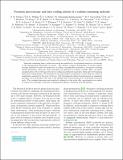| dc.contributor.author | Udrescu, S. M. | |
| dc.contributor.author | Wilkins, S. G. | |
| dc.contributor.author | Breier, A. A. | |
| dc.contributor.author | Athanasakis-Kaklamanakis, M. | |
| dc.contributor.author | Garcia Ruiz, R. F. | |
| dc.contributor.author | Au, M. | |
| dc.contributor.author | Belošević, I. | |
| dc.contributor.author | Berger, R. | |
| dc.contributor.author | Bissell, M. L. | |
| dc.contributor.author | Binnersley, C. L. | |
| dc.contributor.author | Brinson, A. J. | |
| dc.contributor.author | Chrysalidis, K. | |
| dc.contributor.author | Cocolios, T. E. | |
| dc.contributor.author | de Groote, R. P. | |
| dc.contributor.author | Dorne, A. | |
| dc.contributor.author | Flanagan, K. T. | |
| dc.contributor.author | Franchoo, S. | |
| dc.contributor.author | Gaul, K. | |
| dc.contributor.author | Geldhof, S. | |
| dc.contributor.author | Giesen, T. F. | |
| dc.contributor.author | Hanstorp, D. | |
| dc.contributor.author | Heinke, R. | |
| dc.contributor.author | Koszorús, Á. | |
| dc.contributor.author | Kujanpää, S. | |
| dc.contributor.author | Lalanne, L. | |
| dc.contributor.author | Neyens, G. | |
| dc.contributor.author | Nichols, M. | |
| dc.contributor.author | Perrett, H. A. | |
| dc.contributor.author | Reilly, J. R. | |
| dc.contributor.author | Rothe, S. | |
| dc.contributor.author | van den Borne, B. | |
| dc.contributor.author | Vernon, A. R. | |
| dc.contributor.author | Wang, Q. | |
| dc.contributor.author | Wessolek, J. | |
| dc.contributor.author | Yang, X. F. | |
| dc.contributor.author | Zülch, C. | |
| dc.date.accessioned | 2024-01-16T16:45:15Z | |
| dc.date.available | 2024-01-16T16:45:15Z | |
| dc.date.issued | 2024-01-09 | |
| dc.identifier.issn | 1745-2473 | |
| dc.identifier.issn | 1745-2481 | |
| dc.identifier.uri | https://hdl.handle.net/1721.1/153313 | |
| dc.description.abstract | Molecules containing heavy radioactive nuclei are predicted to be extremely sensitive to violations of the fundamental symmetries of nature. The nuclear octupole deformation of certain radium isotopes massively boosts the sensitivity of radium monofluoride molecules to symmetry-violating nuclear properties. Moreover, these molecules are predicted to be laser coolable. Here we report measurements of the rovibronic structure of radium monofluoride molecules, which allow the determination of their laser cooling scheme. We demonstrate an improvement in resolution of more than two orders of magnitude compared to the state of the art. Our developments allowed measurements of minuscule amounts of hot molecules, with only a few hundred per second produced in a particular rotational state. The combined precision and sensitivity achieved in this work offer opportunities for studies of radioactive molecules of interest in fundamental physics, chemistry and astrophysics. | en_US |
| dc.language.iso | en_US | |
| dc.publisher | Springer Science and Business Media LLC | en_US |
| dc.relation.isversionof | 10.1038/s41567-023-02296-w | en_US |
| dc.rights | Creative Commons Attribution-Noncommercial-Share Alike | en_US |
| dc.rights.uri | http://creativecommons.org/licenses/by-nc-sa/4.0/ | en_US |
| dc.source | Author | en_US |
| dc.subject | General Physics and Astronomy | en_US |
| dc.title | Precision spectroscopy and laser-cooling scheme of a radium-containing molecule | en_US |
| dc.type | Article | en_US |
| dc.identifier.citation | Udrescu, S.M., Wilkins, S.G., Breier, A.A. et al. Precision spectroscopy and laser-cooling scheme of a radium-containing molecule. Nat. Phys. (2024). | en_US |
| dc.contributor.department | Massachusetts Institute of Technology. Department of Physics | en_US |
| dc.relation.journal | Nature Physics | en_US |
| dc.eprint.version | Author's final manuscript | en_US |
| dc.type.uri | http://purl.org/eprint/type/JournalArticle | en_US |
| eprint.status | http://purl.org/eprint/status/PeerReviewed | en_US |
| dspace.date.submission | 2024-01-12T20:53:17Z | |
| mit.license | OPEN_ACCESS_POLICY | |
| mit.metadata.status | Authority Work and Publication Information Needed | en_US |
